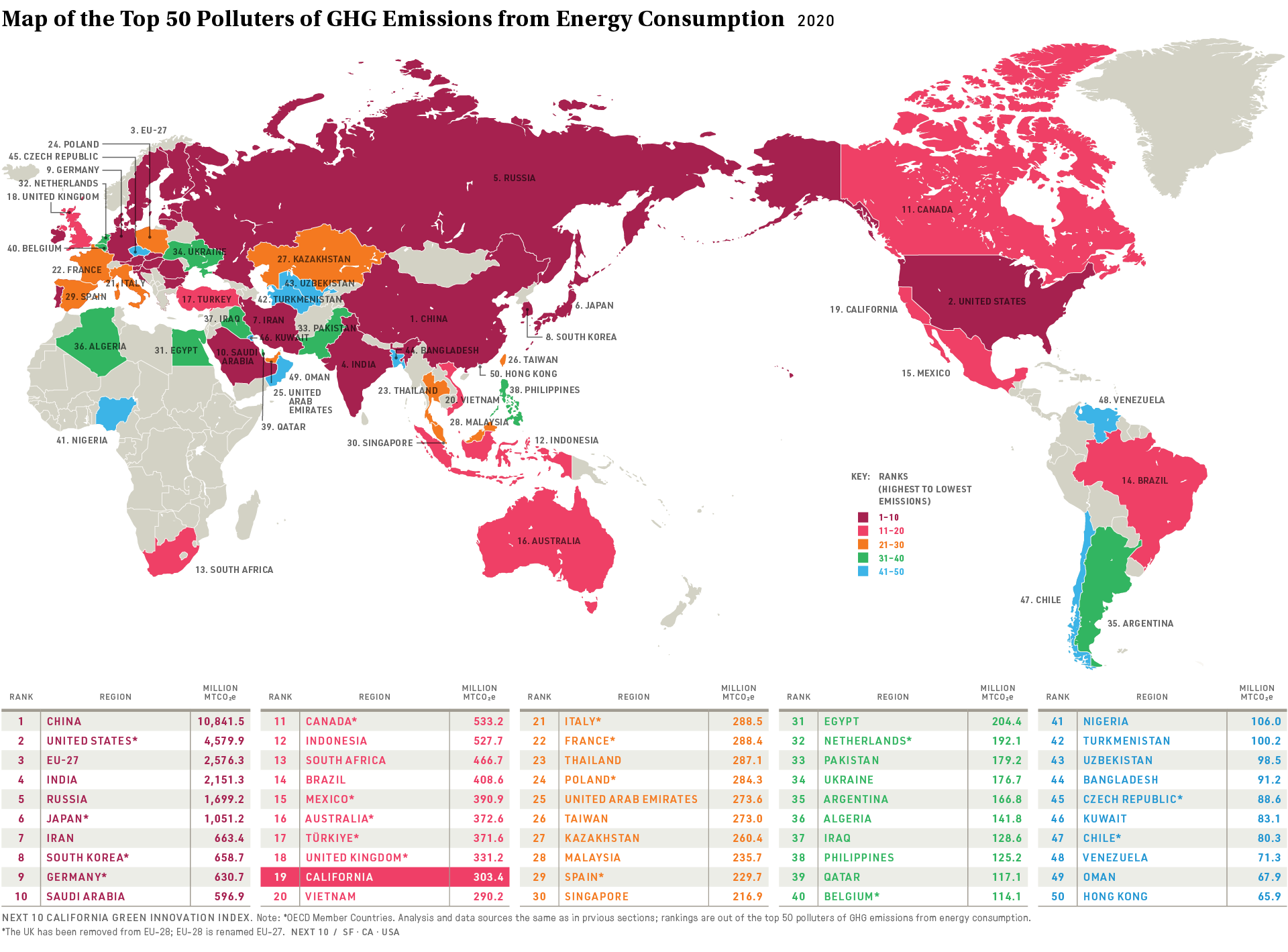International Scorecards
Relative to the other top 50 polluters across the globe, California’s carbon economy profile improved in some areas in 2020—the latest year for which internationally comparable data were available. California had the 19th-highest amount of energy-related carbon emissions in 2020—unchanged from the previous year. In terms of carbon economy, California improved by two places to 3rd. The state also saw improvements in energy productivity (from 8th to 6th highest).
On the other hand, California’s rankings continued to slip on some of the per capita metrics. While California’s ranking on energy consumption per capita moved down four places compared to 2019, the state’s electricity consumption per capita went down five places from 30th to 35th, a continuation of the trend from 2018 to 2019. California’s ranking on emissions per capita (where one is the lowest) went down by five place from (from 32nd to 27th.
California has also seen its share of electricity generation from renewable sources (excluding hydroelectric) decline from 2019 to 2020. In 2020, among the top 50 polluters, California had the 4th-highest amount generated, down one place from 2019 when it was 3rd-highest, as Spain improved. Additionally, total renewable electricity generation fell from 10th to 12th from 2019 to 2020 as Italy and France moved up.
Energy productivity is a measure of how efficiently a country or state uses energy to produce economic output. It is calculated by dividing the Gross Domestic Product (GDP) by the amount of energy consumed (in British Thermal Units or BTUs). A higher energy productivity indicates that an economy is able to produce more economic output for each unit of energy consumed. In terms of energy productivity, California has moved up two places to reach the 6th-highest position from its 2019 ranking. Improving energy productivity is an important goal for many policymakers, as it can lead to cost savings, reduced greenhouse gas emissions, and improved energy security.



